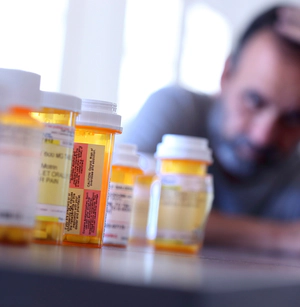How Long Does It Take to Get Addicted?
Addiction can take hold in a matter of days or over years, with some substances gripping users faster than others. Discover the reasons for the difference.

Learning how long it takes to get addicted requires an understanding of the types of drugs people are using today. Some drugs are very rapidly addictive and others may be used for years without necessarily creating addiction. The differences lie both in the drug and in the person using them.
Developing an Addiction to Alcohol
Overuse and addiction to alcohol is not a new problem by any means. Since alcoholic beverages go back as much as 9,000 years, it’s likely that humans have been getting drunk and addicted for that long. Methods of recovering from alcoholism are more recent. Alcoholics Anonymous launched in 1935, and alcoholism was identified as a medical problem in 1956.
According to research, the younger a person starts drinking, the greater their chance of becoming addicted. Young people who started drinking before they turned 15 have four times the risk of becoming addicted compared to those who start when they are 21 or later.
In 2023, more than 177 million Americans had drunk alcohol in the prior year. Nearly 29 million of these people drank enough to be classified as addicted to the substance. The length of time it takes to become addicted to alcohol can vary widely, depending on each person’s degree of alcohol abuse. One survey revealed that among those who abused alcohol—meaning they drank enough to harm their health and or their life—it took an average of 3.16 years to become dependent.
Dependence on Abused, Legal Prescription Drugs

Prescription painkillers: According to the Department of Labor, it’s possible to become addicted to painkillers in a matter of days. This makes an opioid painkiller like OxyContin or generic oxycodone, Vicodin or generic hydrocodone, or other painkiller extremely dangerous to abuse. When used for pain, these drugs must be prescribed by a doctor with great care to prevent addiction. When a person abuses these pills or buys them from drug dealers, there is no such care.
Prescription stimulants: These are drugs prescribed for weight loss, difficulty focusing on studies or tasks, or excessive sleepiness. This class of drugs includes Ritalin, Adderall, and Dexedrine. Here, too, studies show that the earlier drug abuse starts, the more quickly addiction starts.
Addictive Illegal Drugs
Marijuana: Because marijuana potency varies greatly, so will the time it takes to become addicted. Studies have shown that higher THC (tetrahydrocannabinol) levels in a cannabis product are associated with a faster path to addiction. There are cannabis leaf products that hit 30% THC and higher and concentrates that exceed 90% THC.
However, when cannabis users start in adolescence, they are two to four times more likely to become addicted within two years than an adult who started using the drug.

Methamphetamine: Methamphetamine is known to be highly and quickly addictive. One survey of methamphetamine users found that of 1.6 million American adults who used meth in the past year, more than half were addicted.
Cocaine: Cocaine is also recognized as highly addictive, especially if crack cocaine is used. Some people can use cocaine on weekends only for long periods of time, but the fast, intense high of crack cocaine can addict a person in days, weeks—or even a single use. Oddly, some people manage to smoke crack for long periods without becoming addicted. But it is more common for a user to become addicted.
Heroin and fentanyl: Heroin and fentanyl are the most common opioids on the illicit market. They are both extremely addictive. A Michigan State University study revealed that about one-third of those people who start using heroin become dependent within the first year or less. Fentanyl is as much as 50 times stronger than heroin and 100 times stronger than morphine. Its higher potency gives it the potential to be even more addictive than heroin.
Whenever Addiction Occurs, It’s Vital to Get an Addicted Person into Rehab
Any of these drugs can start a person down the road to ruin. No matter what substance is involved, addiction leads to neglect of one’s family and other loved ones, business, professions, education, health, and much more. The person you cared about can seem to be gone, replaced by someone else you don’t know and don’t like.
Of course, with many of these drugs, there is the danger of a fatal outcome. From alcohol to cocaine, from methamphetamine to fentanyl, any of these drugs can kill.
Finding an effective rehab is essential to put a person back on the path to sobriety. If someone you care about is addicted to drugs or on their way to addiction, don’t wait. Take action now.
About the Narconon Drug Rehabilitation Program
For nearly 60 years, the innovative Narconon program has been the choice of families and individuals who are tired of the revolving door of drug treatment. This is not a Twelve Step program or a 28-day program. It is a long-term residential program that takes a holistic approach to recovery.
The Program’s Steps
The Narconon rehab program guides each person through precise steps that repair the damage done by drug abuse. This process starts with a regimen of vitamins and minerals combined with exercise and time in a low-heat sauna. This combination rids the body of accumulated toxins from past drug or alcohol abuse. Special techniques then help each person leave their addicted life behind and move into a brighter present. Finally, essential life skills training prepares a person to make sober decisions for lasting recovery.
At a Narconon rehab, no one is told they will always be an addict. No one tells them that they have an incurable disease. Learn why this drug-free program with a long track record of success could be the last program your loved one ever needs.
Sources:
- “Ancient Humans Liked Getting Tipsy, Too.” Smithsonian Magazine, 2017. Smithsonian
- “Understanding the Disease of Addiction.” National Council of State Boards of Nursing, 2010. NCSBN
- “Age of Drinking Onset Predicts Future Alcohol Abuse and Dependence.” National Institute on Alcohol Abuse and Alcoholism, 1998. NIAAA
- “Alcohol Use in the United States.” National Institute on Alcohol Abuse and Alcoholism, 2024. NIAAA
- “Probability and Predictors of Transition from Abuse to Dependence on Alcohol, Cannabis, and Cocaine.” National Library of Medicine, 2014. NLM
- “Risk Factors for Opioid Misuse, Addiction, and Overdose.” Department of Labor, undated. DOL
- “Early-onset drug use and risk for drug dependence problems.” National Library of Medicine, 2010. NLM https://pmc.ncbi.nlm.nih.gov/articles/PMC2677076/
- “Higher average potency across the United States is associated with progression to first cannabis use disorder symptom.” National Library of Medicine, 2018. NLM
- “Early-onset drug use and risk for drug dependence problems.” National Library of Medicine, 2010. NLM
- “Patterns and Characteristics of Methamphetamine Use Among Adults .” Centers for Disease Control and Prevention, 2020. CDC
- “Among long-term crack smokers, who avoids and who succumbs to cocaine addiction?” National Library of Medicine, 2009. NLM
- “The five most addictive substances in the world.” CNN Health, 2019. CNN
- “What is the Scope of Opioid Use Today?” NarcononUS.org, 2024. NarcononUS.org
- “About 30 percent of new heroin users become dependent in the first year.” MSU Today, undated. MSU Today
- “What Is Addiction?” NarcononUS.org, undated. NarcononUS.org






 ®
®